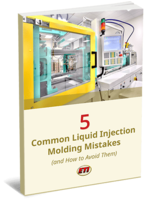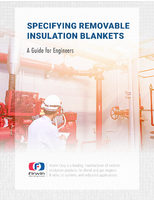ASTM Standard addresses vapor intrusion into structures.
Press Release Summary:
Approved by ASTM International Committee E50 on Environmental Assessment, E 2600 provides guidance for vapor intrusion testing. Evaluation process consists of 4 tiers, with first 2 tiers assessing potential for vapor intrusion issue to exist. Third tier provides more site-specific and comprehensive investigations if potential for vapor intrusion cannot reasonably be eliminated at Tier 1/Tier 2 levels, while Tier 4 addresses mitigation alternatives.
Original Press Release:
New ASTM Standard Provides for Assessment of Potential for Vapor Intrusion into Structures
Vapor intrusion from contaminated soil and groundwater into structures can potentially create significant liability and have a material impact on property value. Because of this, accurately determining whether a property has vapor intrusion issues is a concern for property owners, prospective purchasers and environmental professionals conducting due diligence.
ASTM International Committee E50 on Environmental Assessment has now approved a new standard, E 2600, Practice for Assessment of Vapor Intrusion into Structures on Property Involved in Real Estate Transactions, which will provide guidance for vapor intrusion testing. The standard is under the jurisdiction of Subcommittee E50.02 on Real Estate Assessment and Management.
Anthony J. Buonicore, chair of ASTM Task Group E50.02.06 on Vapor Intrusion, says E 2600 defines good commercial and customary practice for conducting a vapor intrusion assessment on a property parcel involved in real estate transactions. "The specific intent was to establish a methodology to determine whether or not there is a reasonable probability that vapor intrusion could present an environmental risk and liability," says Buonicore. For commercial real estate transactions, Buonicore notes that the vapor intrusion investigation, as defined by E 2600, could be used independently of, or as a supplement to, E 1527, Practice for Environmental Site Assessments: Phase I Environmental Site Assessment Process.
The evaluation process, as described in E 2600, consists of four tiers. The first two screening tiers are used to assess the potential for a vapor intrusion issue to exist, so that properties with a low risk can be screened out quickly and inexpensively. The third tier provides for more site-specific and comprehensive investigations if the potential for vapor intrusion cannot reasonably be eliminated at the Tier 1/Tier 2 levels while Tier 4 addresses mitigation alternatives.
According to Buonicore, because timeliness may be more important than investigation or mitigation costs during real estate transactions, an E 2600 user does not need to proceed sequentially through the tiers in the standard. "In most cases, however, it is expected that it would be more cost effective and sufficient time would be available in the real estate transaction to conduct at a minimum a Tier 1 screening evaluation and, if necessary, a Tier 2 screening evaluation before proceeding to a more costly and time-consuming Tier 3 investigation or to Tier 4 mitigation," says Buonicore. He also notes that the process described in E 2600 is designed to complement existing federal and state vapor intrusion policies or guidance.
"ASTM was selected as the best venue to develop the standard because of ASTM's internationally recognized consensus-based process that has been used so successfully over the years," says Buonicore. "ASTM is able to bring together stakeholders representing all sides of an issue and work with them to achieve consensus."
Several events have been planned in conjunction with the publication of E 2600. A workshop on the new standard will be held at the Marriott Anaheim Hotel on April 8, from 1 p.m. to 3 p.m., as part of Committee E50's standards development meetings. In addition, a training class, Assessment of Vapor Intrusion into Structures on Property Involved in Real Estate Transactions, will now be held on a regular basis throughout the United States. Upcoming session locations include Boston (March 25), Edison, N.J. (March 26) and ASTM International Headquarters in West Conshohocken, Pa. (March 27). More information on the workshop and the training sessions can be found on the Committee E50 page of the ASTM Web site (www.astm.org).
ASTM International standards can be purchased from Customer Service (phone: 610/832-9585; service@astm.org) or at www.astm.org.
For further technical information, contact Anthony J. Buonicore, P.E., Milford, Conn. (phone: 800/238-1841; ajb@edrnet.com). Committee E50 meets April 8-10 at the ASTM committee week in Anaheim, Calif. For membership or meeting information, contact Daniel Smith, Technical Committee Operations, ASTM International (phone: 610/832-9727; dsmith@astm.org).




